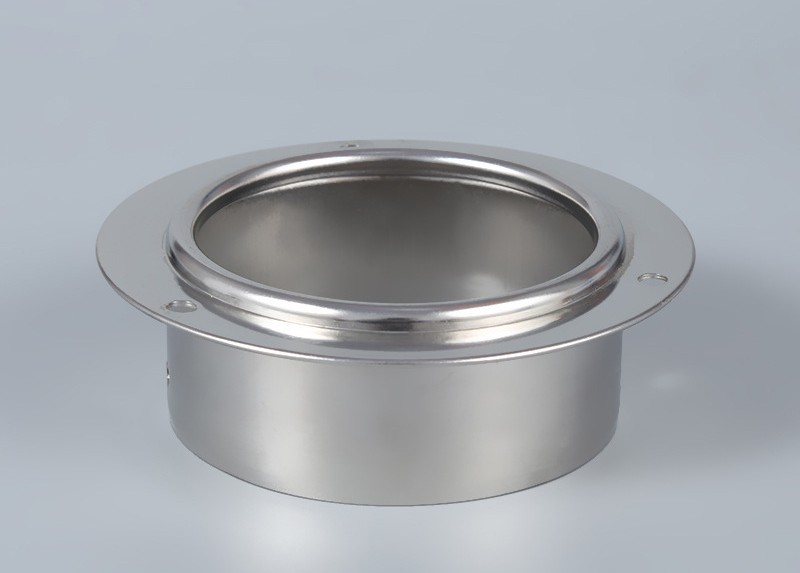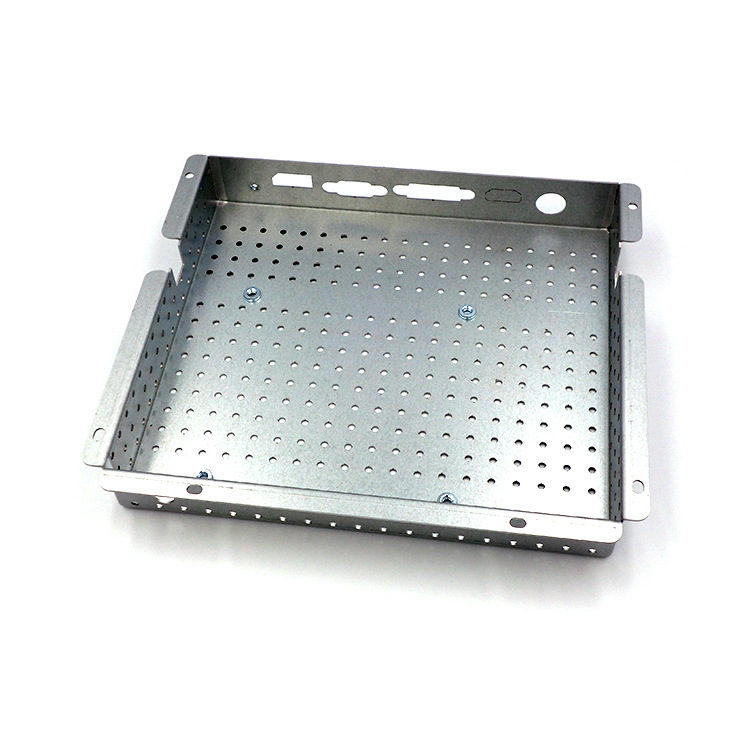During the metal stamping process, various problems may occur to a greater or lesser extent, and a large part of these problems are caused by very low-level errors. It reflects that our basic knowledge in stamping processing is not up to par. Here are some common basic errors in the stamping process:
1. The depth of the upper die entering the lower die during stamping is too large
When we do metal punching, the depth of the upper mold entering the lower mold should not be too large. Generally, it is advisable to just break the sheet metal, and this depth can be taken as 0.5-1mm. If the depth of the upper die entering the lower die is too large, it will intensify the wear between the upper die and the lower die. In the case of poor mold guidance and punching machine motion accuracy, it will also bite the mold edge, especially when punching thick materials, small holes, and high-speed stamping, the depth of the upper die entering the lower die cannot be too deep. To prevent the upper mold from entering the lower mold too deeply, a limit post can be installed on both sides of the mold to limit the depth of the upper mold entering the lower mold. When grinding the upper mold, also grind the limit sleeve to the same amount of grinding.
.jpg)
2. Eccentricity between the stamping pressure center and the punching press pressure center
The point of action of the combined force of punching pressure is called the center of punching pressure. Taking a small punch as an example, if the stamping pressure center and the punch pressure center (usually located on the axis of the mold handle hole) are not on the same axis, the punch slider will bear eccentric load, which will cause abnormal wear of the slider guide rail and mold guide part, damage the motion accuracy of the punch, reduce the life of the mold, and even damage the mold. Therefore, determining the stamping pressure center is an important task in mold design. For workpieces with simple and symmetrical shapes, the point of action of the stamping force is at its geometric center, and the pressure center does not need to be calculated. For complex shaped workpieces and continuous stamping dies with multiple processes, the method of finding the resultant force point of parallel force system should be used to determine the center of stamping pressure.

3. The punching pressure exceeds the nominal pressure of the punching machine
The selection of stamping press is mainly based on the punching pressure. The principle is that the punching pressure cannot exceed the nominal pressure of the punching machine. The main factors affecting punching pressure are material thickness and mechanical properties, peripheral length of stamped parts, mold gap size, and sharpness of the cutting edge. When stamping high-strength materials or workpieces with large thickness and long stamping contour (such as thick plate stamping), the required punching pressure is often close to or exceeds the nominal pressure of the punching machine. When the available punching machines in the factory are limited, it is necessary to consider reducing the punching pressure from the mold structure. The main methods to reduce punching pressure include: oblique edge stamping, progressive die stamping, part step-by-step stamping, heating stamping, etc. The oblique edge punching method is to make the cutting edge of the upper die (during punching) or the lower die (during material cutting) inclined at an angle to its axis, which is less than 150 degrees. Generally, it takes 80-100 degrees and is similar to the oblique edge shearing. The entire cutting edge does not come into contact at the same time, but gradually cuts the material. As a result, the punching pressure is significantly reduced and the vibration and writing noise during stamping can be reduced. Heating stamping is the stamping of materials in a heated state (also known as red stamping). Due to the significant decrease in shear strength of metal materials in a heated state, it can effectively reduce the punching pressure. But the disadvantage of this method is that the material generates oxide skin after heating, which affects the surface quality of the parts. Therefore, it is generally used for stamping thick plates or stamping parts with low requirements for size and surface quality. In addition, dull, chipped or not sharp mold edges can significantly increase the punching pressure. Therefore, maintaining a sharp edge is one of the conditions for normal operation of stamping molds. In order to maintain the sharp edge of the mold, the edge should be polished after stamping for a period of time.
.jpg)
4. When fixing the upper die, the precision punching die has a large cavity below the die seat
The structural types of precision punching molds can be divided into fixed upper mode precision punching molds and movable upper mode precision punching molds. Different forms of mold structures require the corresponding matching of the punch table structure. For the precision punching die in the activity mode, it is required that the worktable of the punching machine be fixed as the center part, with a floating hydraulic worktable composed of circular oil cylinders and plungers around it. For fixed pattern precision punching molds, it is required that the middle part of the worktable of the punching machine is equipped with a plunger cylinder. The characteristic of this mold structure is that the upper and lower molds are fixed on the lower mold seat, and the edge pressing ring maintains relative motion with the upper and lower molds through the transmission rod and mold seat. The fixed upper mode precision punching die should not have a large cavity under the mold seat, because when the upper mold is pressed down, the hydraulic cylinder moves downward under the action of the transmission rod, resulting in a large cavity under the mold seat. All the punching pressure acts on the top of the cavity, causing the upper and lower molds to bend, which is very unfavorable. However, in the future, under the increasing punching pressure, the lower part of the upper and lower molds will bend, causing the danger of tearing. In order to avoid this situation, when the punching pressure is high, it is necessary to use a dedicated joint ring to improve the support conditions of the lower mold seat and avoid large scratches that may cause bending of the upper and lower molds. Due to the development of precision punching technology towards large-scale and composite processes, it is necessary to punch porous or large internal contours with a very high punching pressure, requiring a large amount of edge pressure and back pressure. Therefore, it is required to punch in the middle of the worktable of the punching machine.
.jpg)
5. On the activity mode, precision punching molds are used to punch porous or large internal contour parts
The upper and lower molds of the precision punching die in the activity mode are directly fixed at the center of the workbench, with good support conditions. The characteristic of this mold structure is that the upper and lower molds are movable relative to the mold seat, and the upper and lower molds are guided by the inner holes of the mold seat and the edge pressing ring. The lower mold and the edge pressing ring are fixed on the upper and lower mold seats respectively. The upper and lower molds maintain relative positions through the edge pressing ring and the lower mold. Therefore, it is required that the gap between the upper and lower molds be smaller. Only by providing longer guidance and correct positioning for the upper and lower molds can alignment be ensured. Therefore, on the activity mode, precision punching molds cannot be used to punch porous or large internal contour parts, because the mold assembly is difficult to center and the gap is difficult to ensure. Therefore, it is mainly suitable for precision punching of small and medium-sized parts.
.jpg)
6. The heat treatment hardness of the upper and lower molds of the stamping die is lower than 55HRC
The upper and lower molds of the metal pressing die come into contact with the stamping material and are subjected to greater force, resulting in faster wear. Therefore, the upper and lower molds of the stamping die must be heat treated, and the hardness cannot be lower than 55HRC, because the higher the hardness, the higher the strength of the mold and the more wear-resistant it is. Different mold steel materials have different heat treatment processes and hardness. Cold work mold steel Cr12MoV and high-speed steel W18Cr4V2 have high heat treatment hardness, good hardenability, small quenching deformation, and no cracking, making them suitable for stamping parts with complex shapes. On the other hand, T8A has good hardenability but poor hardenability, and is prone to cracking due to large quenching deformation. It is commonly used for stamping parts with simple and relatively soft shapes. Due to the relatively difficult processing of the lower mold compared to the upper mold, the hardness of the lower mold is generally 2-3 Rockwell hardness higher than that of the upper mold. That is, the heat treatment hardness of the upper mold is generally 58-60HRC, and the heat treatment hardness of the lower mold is 60-62HRC.
